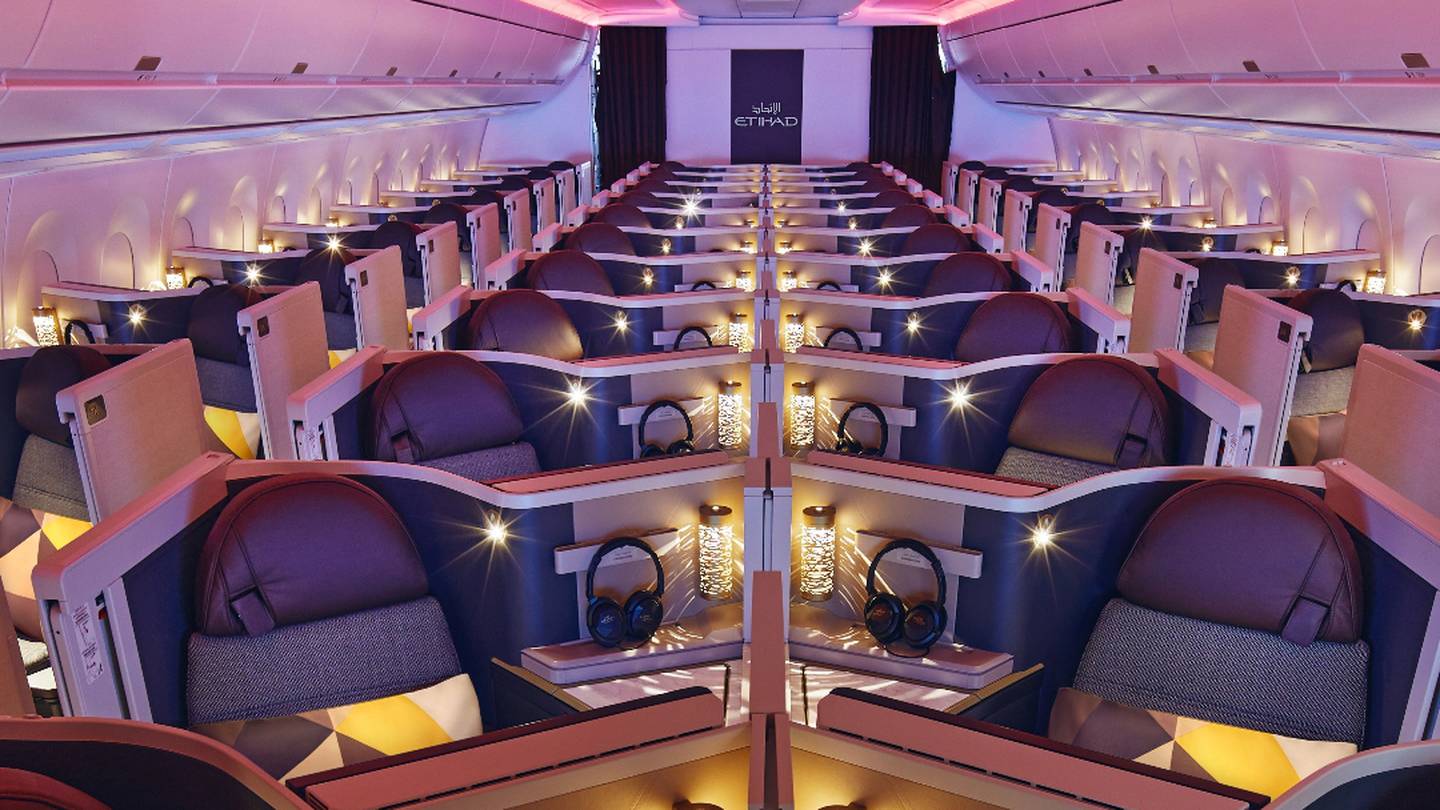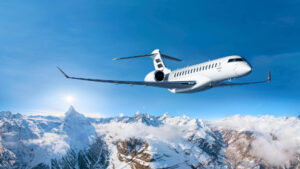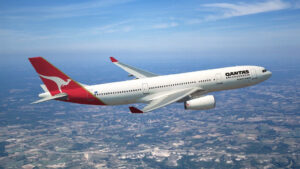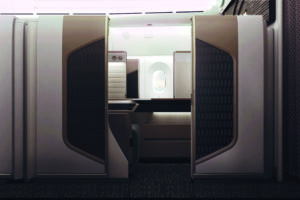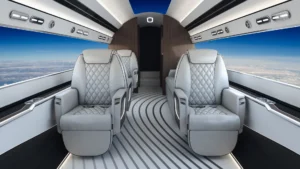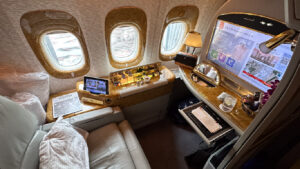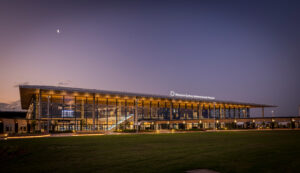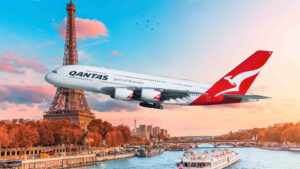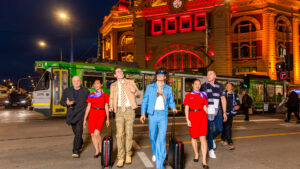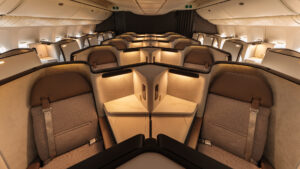BH’s Etihad Airways Business Class Review
(SYD-AUH-FCO)
One cabin, three different products. This most recent September, I flew as a guest of Etihad from Sydney to Rome via Abu Dhabi (and back via London Heathrow), a trip that would take me across the evolution of the Gulf carrier’s business class product and give me a solid idea of how far its pointy-end offering has come over the years. And why Australian travellers have pulled the short end of the stick, at least for now.
Etihad Airways has a number of both narrow-body and widebody aircraft as part of its diverse fleet, spanning four different aircraft families. The oldest of these, the Boeing 777, is currently being used to service the Sydney to Abu Dhabi route, despite Etihad’s initial intentions to retire the aging aircraft in 2021.
The rest of the fleet is made up of the Airbus A320 family, Airbus A350-1000 and the iconic Boeing 787 Dreamliner – still the fastest-selling wide-body aircraft in history. In total, Etihad has around 85 aircraft as part of its fleet, and yet Australian business travellers come up short when flying to the carrier’s hub of Abu Dhabi. As mentioned above, the route is served by the Boeing 777, which has Etihad’s older Business Class product on board.
Abu Dhabi to Rome fares much better with the spacious Boeing 787 Dreamliner allowing for a greater overall experience, sticking to the same beats as Etihad’s signature Business Class product but maximising the increased space with a generous sense of convenience and comfort.
As for London Heathrow to Abu Dhabi? That’s on the A350-1000, offering Etihad’s newest Business Class suites complete with sliding doors for a swift uptick in privacy. Other than the door, however, it’s pretty much the same Business Class as onboard the 787.
And yet the inclusion of a sliding door does make a meaningful difference. I’ve always found that if you can create more privacy for yourself, it helps you fall asleep much easier. And the proof is in the pudding – I slept through the large majority of the flight (although spending a month running around Italy would have helped too).
I’m going to take a bit of a different angle to this Etihad flight review than we usually take when reviewing just one airline product. Given I experienced Etihad Business Class across three different aircraft, I’ll be taking a ‘compare and contrast’ approach, and each of the subheadings below will include observations from each iteration.
Etihad Business Class Review Summary
Airline: Etihad Airways
Sydney (SYD) to Abu Dhabi (AUH) Aircraft: Boeing 777-300ER (Flight EY451)
Abu Dhabi (AUH) to Rome (FCO) Aircraft: Boeing 787-9 Dreamliner (Flight EY85)
London (LHR) to Abu Dhabi (AUH) Aircraft: Airbus A350-1000 (Flight EY12)
When Did I Fly? September and October 2022
Cabin Class: Business
Etihad Business Class Review [Boeing 777-300ER x Boeing 787-9 Dreamliner x Airbus A350-1000]
On The Ground
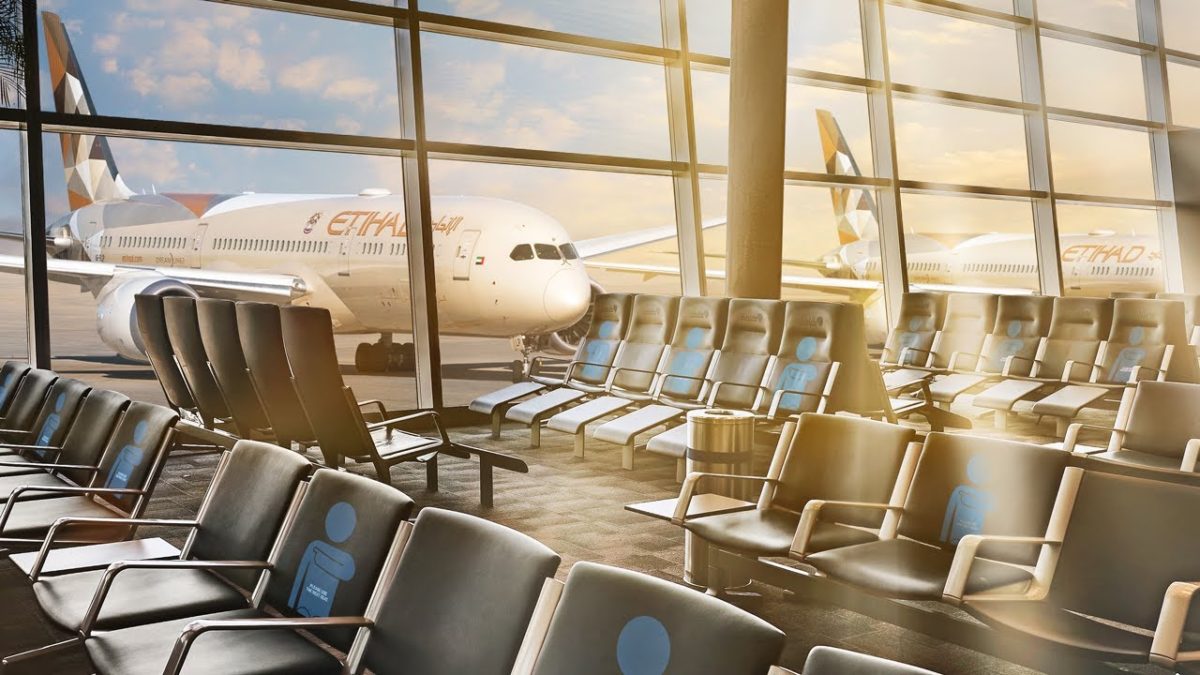
Checking In
Sydney to Abu Dhabi
Having flown Etihad plenty of times, I’m very familiar with their high level of service across all points of the journey. Check-in is no exception. At Sydney International, the process is smooth and the queue – if you could even call it that – moves quickly.
Etihad (and Abu Dhabi) no longer have any testing requirements, although at the time it was advisable to get a quick swab once I landed at Abu Dhabi International Airport. Now that a green pass on the UAE’s Al Hosn app is no longer mandatory to access public spaces, like the incredible Sheikh Zayed Grand Mosque, this is not something you’d need to worry about.
A vaccine certificate is still needed so it’s wise to upload your documents to the Etihad website beforehand to get the all-clear. This is as straightforward a process as you could ask for, meaning there’s no physical document required at check-in aside from just your passport.
Abu Dhabi to Rome
EY85 leaves Abu Dhabi International Airport at 1:40 AM and arrives at Rome’s Fiumicino Leonardo Da Vinci Airport at 5:50 AM. It’s a pain, of course, to have to get to the airport at such a late hour but the benefit here is that the terminal is virtually empty.
Boarding couldn’t be quicker, nor the staff more efficient. This is mostly due to Etihad having its own check-in facility as opposed to just a counter with other airlines. It makes for a very speedy, painless experience.
The timing of the flight also means you land in Rome very early and it can work in your favour. You will have to wait around to check in to your hotel, but as long as you’re fine with that then there are many upsides. For starters, traffic to Rome is a breeze and if you time it right as I did, you could get to The Colosseum just before sunrise and start the day with a classic Roman pastry. It’s a great first impression of the city’s eternal beauty.
London to Abu Dhabi
Coming back isn’t as smooth, but nothing at London Heathrow ever is. A fast lane for Business and First passengers still moves at a snail’s pace and people are clearly frustrated. This is because a lot of passengers are still forgetting to put their toiletries in clear packaging. If the flight hadn’t been slightly delayed, I would be a ball of stress.
Once the queue is cleared, my flight – EY12 – is only delayed by around 20 minutes. Of course, no delay is preferable, but when you’re dealing with one of the world’s most infamously chaotic airports in 2022, such a negligible pushback is impressive.
The Lounge
The House, Sydney International T1
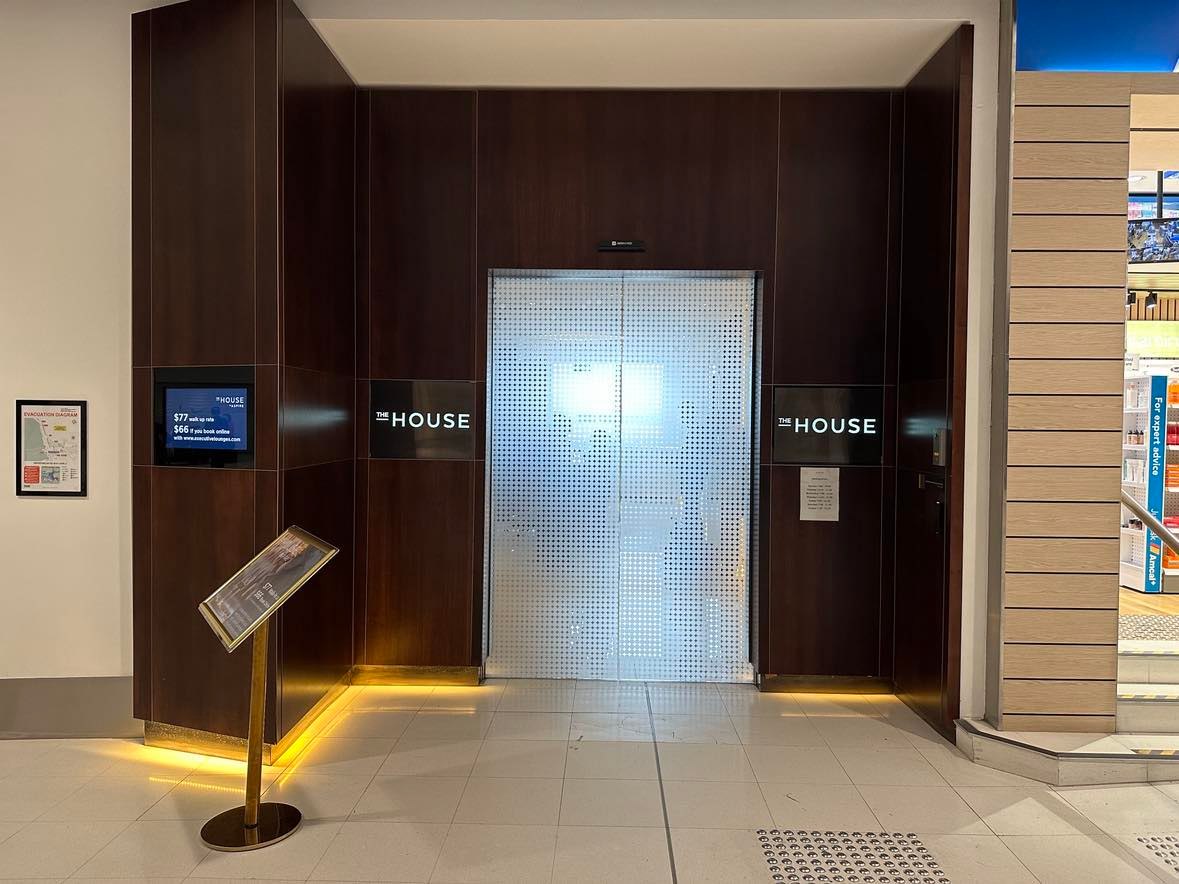
It’s been some time since Etihad Airways maintained exclusive use of The House, which in Sydney International is located just before gates 50 and 51, right next to what is currently an Amcal+ Express pharmacy.
After Etihad ran the lounge for a few years, it was taken over by London-based No1 Lounges in an effort to cater to a wider range of premium passengers. The House became part of Swissport’s Aspire Lounges portfolio in 2021, making it more of a pay-per-entry lounge that doubles as the official Business Class lounge for British Airways and Etihad.
The House is functional and gets the job done. While you’re sharing the lounge with all sorts of passengers, you won’t get that sense of exclusivity you would with some of Etihad’s other premium airport lounges around the world, but there’s little to complain about if you know what to expect.
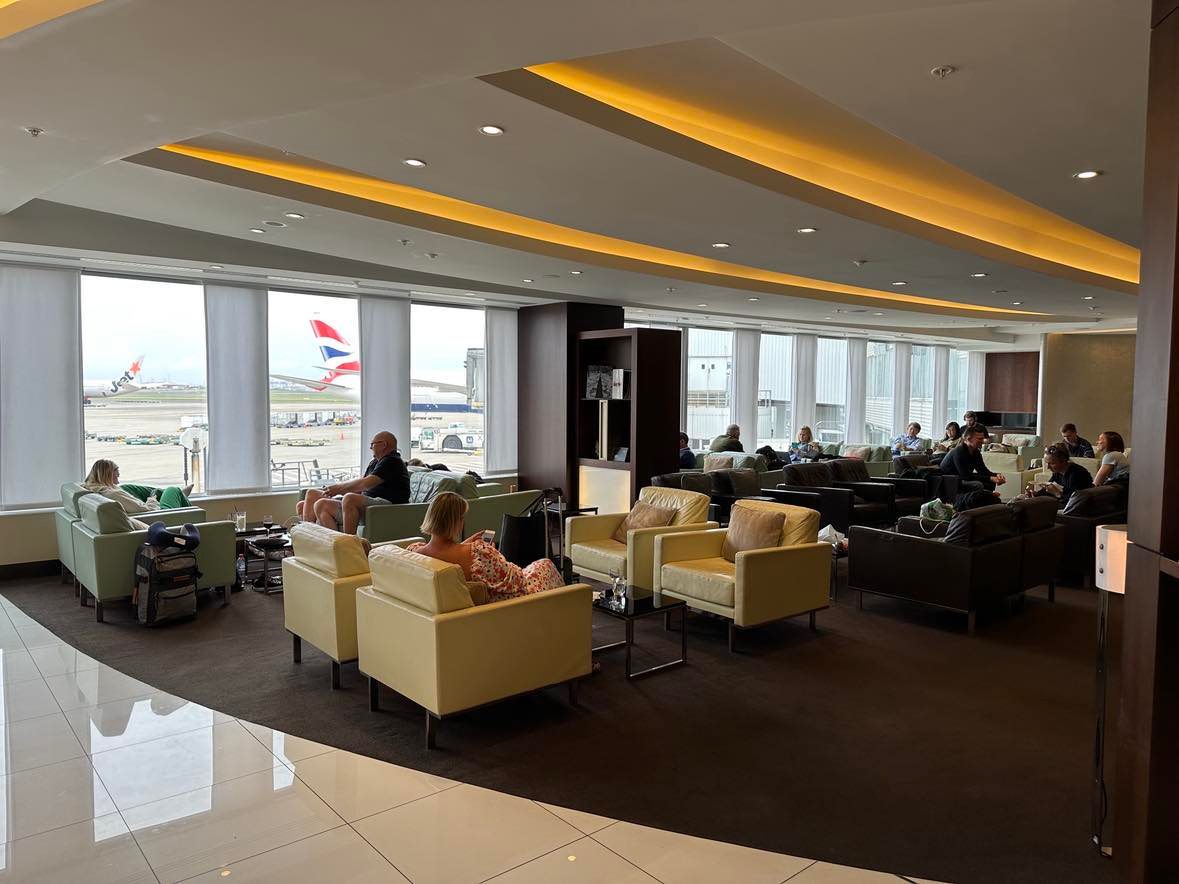
I’m told a la carte dining will be re-introduced in the near future, but for now, the buffet does just fine. The open bar is also plain looking but has a decent selection of wines, beers and spirits for you to take to the airy seat areas, which are spread up between armchair couches, tables and about seven workstations – that is, just stools seated close to one another – with access to power points.
A small children’s playroom is off to the side and there are prayer rooms for both males and females. Further along, you’ll find bathrooms and shower rooms which are thankfully spacious and well-stocked with L’Occitane amenities. I’d say the showers are the strong point of the entire lounge, given The House is the only independent lounge in Sydney offering them.
I’ll be detailing The House Sydney further in a standalone airport lounge review.
Etihad Business Class Lounge, Abu Dhabi International T3
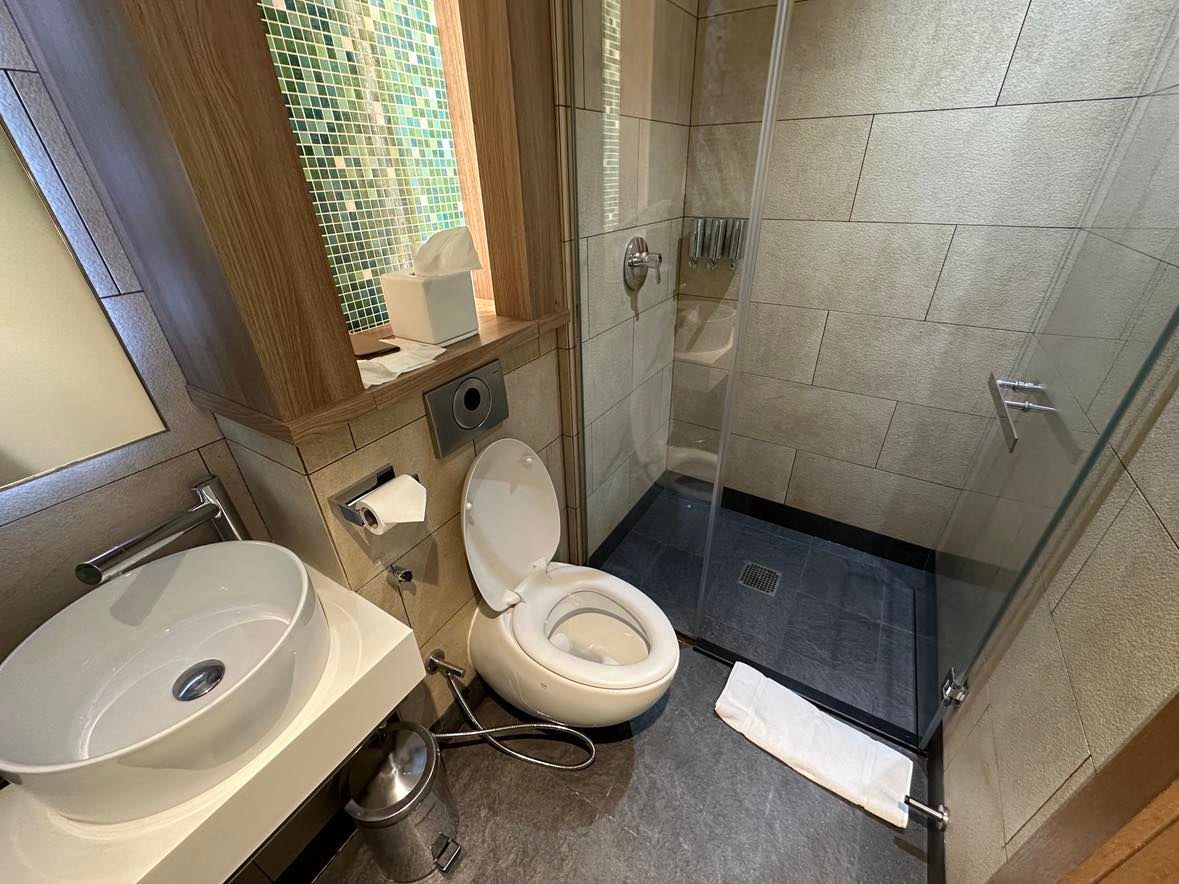
Coming back, the Etihad Business Class Lounge in Terminal 3 of Abu Dhabi International Airport is much more impressive. Given this is the flagship lounge, it’s almost always going to be absolutely teeming with passengers flying out of AUH, but fortunately, there’s more than enough space that even a capacity lounge is of little concern.
Food at the Abu Dhabi Airport lounge is far better than a lot of airport lounge food I’ve tried in my time, mostly skewing health-conscious Middle Eastern with various stations dedicated to either hot food or desserts. A sayadieh with seabream hits the spot without being overly salty.
There aren’t many shower suites but they are generously sized with enough space to hang clothes and refresh before a long haul. Given that is the best thing about airport lounges, Etihad has thankfully paid attention to the upkeep – the suite I used was impeccably clean, which is important to note given it was quite late in the day when I arrived.
Up In The Air
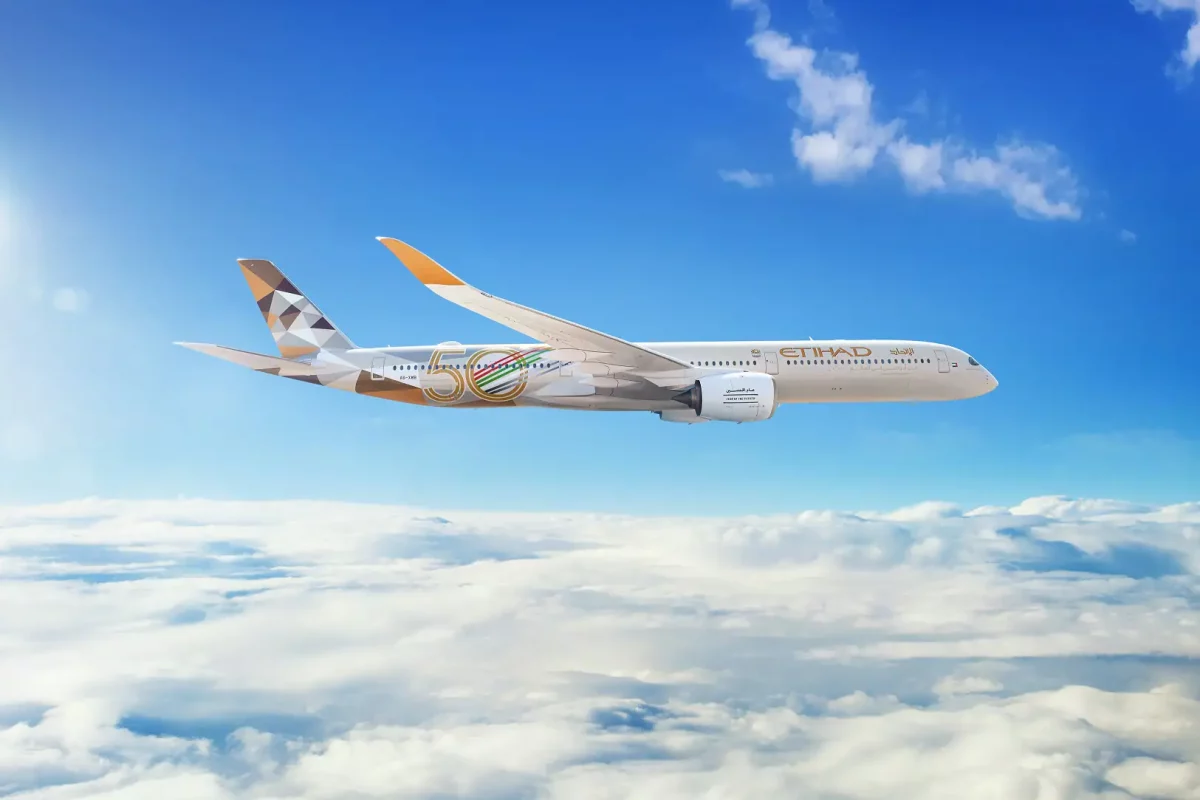
In-Flight WiFi
Across all three flights, Wi-Fi is available but isn’t included in the ticket. If you want six hours with a measly 200MB data allowance then you’ll pay US$16 (~AU$23). I ended up going for this option (there’s cheaper, but it’s not worth it) in order to do some work on the flight, but I needed to top up at least once.
Seat
Sydney to Abu Dhabi (Boeing 777-300ER)
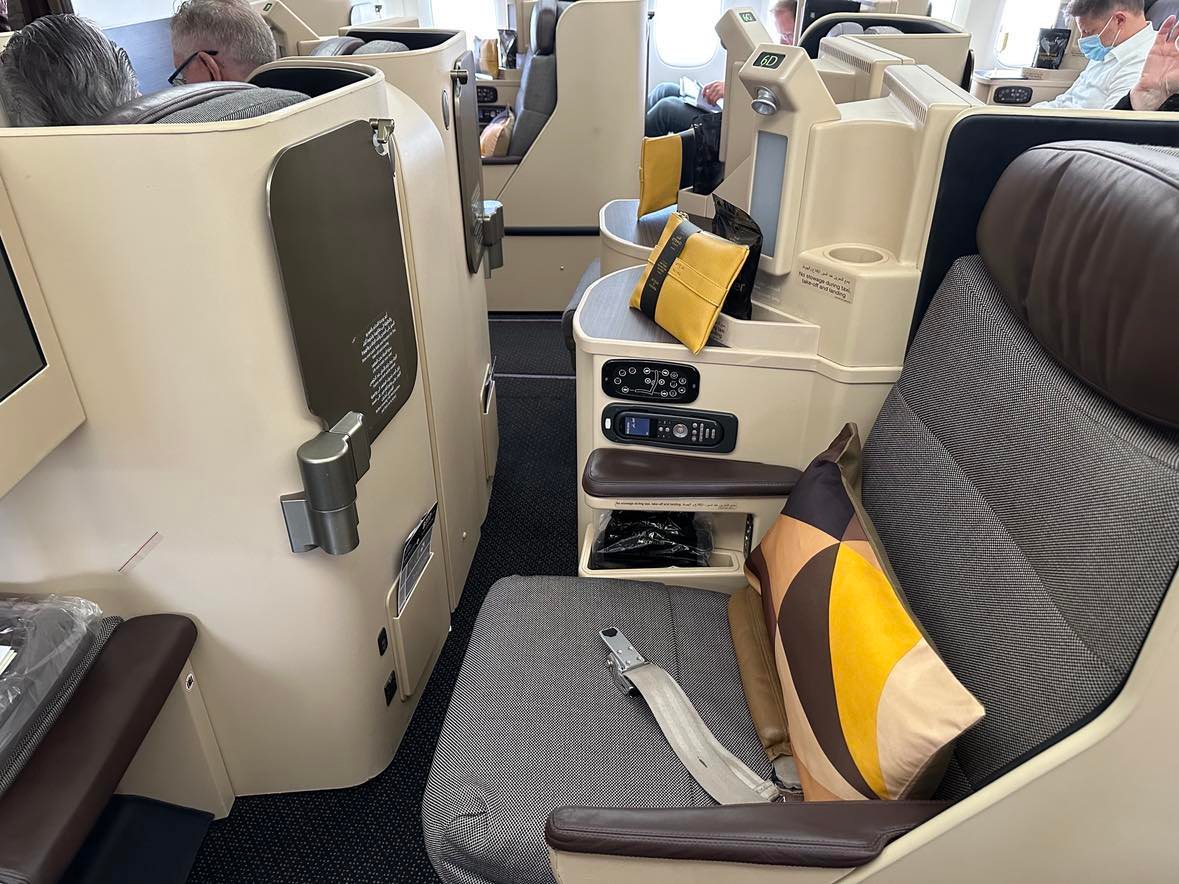
Seat: 6A
Configuration: 1-2-1
Immediately, you can tell this is the older Business Class product from Etihad. The design of the cabin is rather blocky and plain, lacking any kind of visual panache. Despite this, the 1-2-1 configuration feels spacious. There are 28 Business Class seats in my cabin and each has direct aisle access with a 73-inch pitch and a 20-inch width.
While knowing Etihad has a much newer, nicer Business Class product operating on other routes, it’s easy to feel some level of disappointment. And that’s exactly what I would have felt had the overall experience not been so positive.
The main step-back with the Etihad 777 Business Class product is table space. There is one angled surface on which to put your travel accessories, and it barely fits the Aqua di Parma amenity kit and a sealed bag with some alcohol wipes and hand sanitiser.
Thankfully the seat itself is reasonably comfortable, and turning it into a bed is simple with the side panel, which has numerous buttons corresponding to various functions and seat configurations.
Abu Dhabi to Rome (Boeing 787-9 Dreamliner)
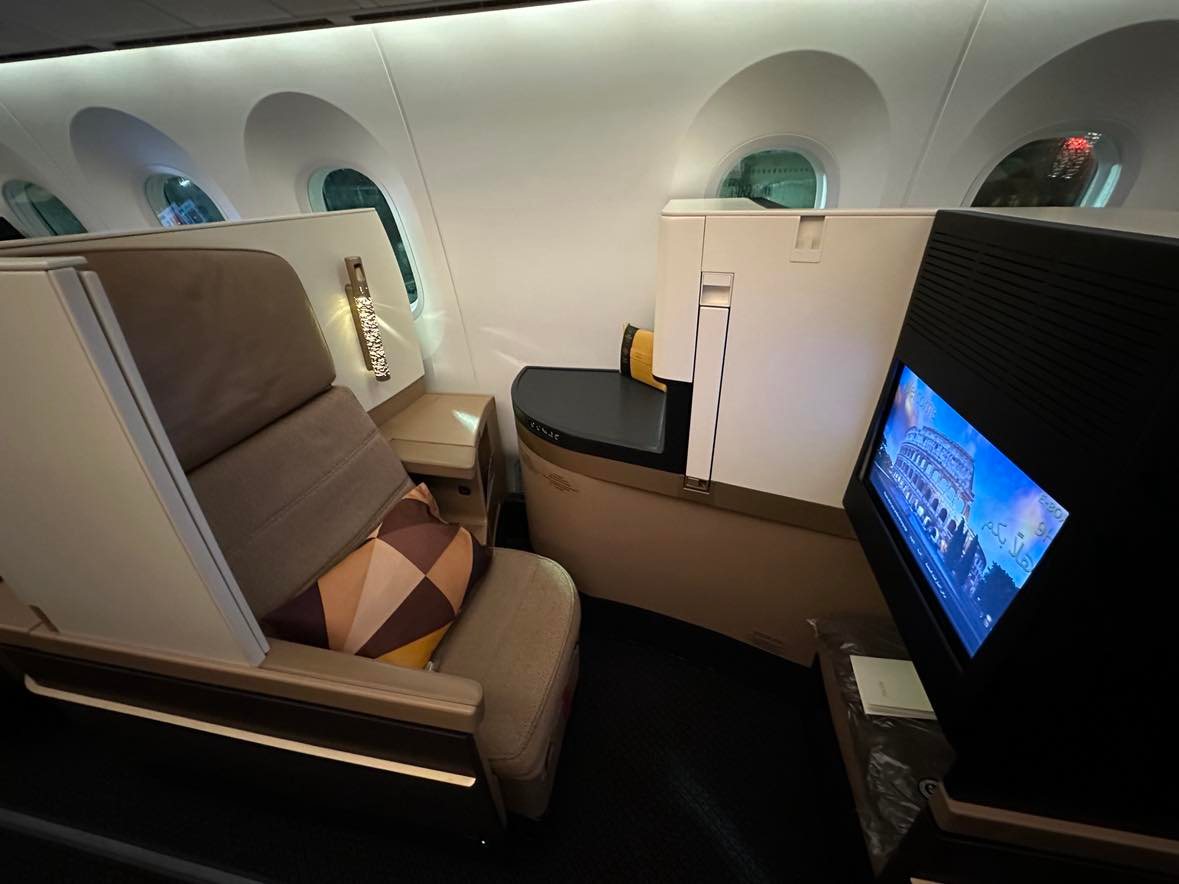
Seat: 9H
Configuration: 1-2-1
This is more like it. While overall, the Business Class product looks and feels the same onboard the 787-9 Dreamliner, Etihad has utilised all the extra space to add more surfaces for you to put your belongings on. Key to this is the alternating pattern of the seats, with some facing forward and others facing backwards in a 1-2-1 configuration. I prefer it.
My seat, 5H, is a bulkhead and faces the back of the plane. Given the cabin isn’t quite full, the crew ask if I’d like to switch seats to face the front of the plane. It really doesn’t bother me either way so I opt to remain in 5H, but I appreciate the option nonetheless.
The 22-inch wide seat comes with much more attractive, modern touch-sensitive panels for all the functions, including navigating the entertainment system which is displayed on a large 18.5-inch touchscreen. It’s sleek and I appreciate the overall feeling of being cocooned in my private suite much more given I have such a recent frame of reference.
A generous 73-inch bed is ready at will and the blanket they give you is much more comfortable, helping rock me to sleep much easier.
London to Abu Dhabi (Airbus A350-1000)
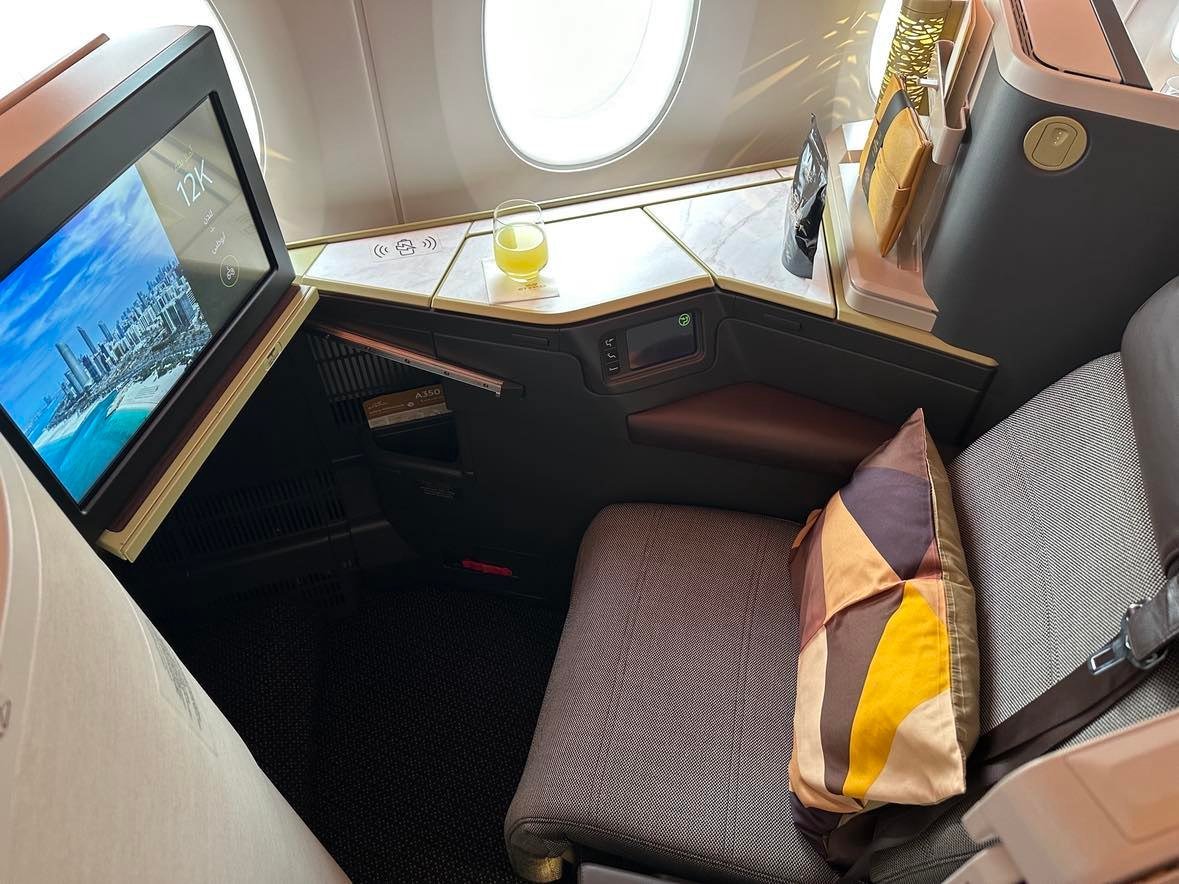
Seat: 12K
Configuration: 1-2-1
The A350 is afforded Etihad’s most up-to-date Business Studio suite and is currently only flown on a bigger route like that between London and Abu Dhabi. 2023 will see the delivery of the next wave of Boeing 787-9 Dreamliners into the Etihad fleet, and these will be fitted with the same Business Studio.
And it’s pretty much identical to the one I flew from Abu Dhabi to Rome, except it comes with its own sliding door and better stowage with the continuous surface as you can see from the photo above.
Slide your door shut and the suite instantly feels more private, which as mentioned above helps make sleep that much easier. When it comes to flying, it’s often smaller details that make the biggest differences, and a lot of that has to do with working with your mentality and sense of comfort. In that sense, consider the sliding door a luxury those who have issues sleeping on flights (not me – but I know how lucky I am) cannot do without.
Sleep

As mentioned above, sleep, comfort and privacy overlap when it comes to aviation and with the A350 Business Class, Etihad has hit the nail on the head. That unfortunately also accentuates just how poor Etihad’s 777 Business Class is for sleeping.
While you are lying flat in the older Business Suite, of course, it’s still much harder to doze off because you become more aware of people walking up and down the aisle. The sliding door doesn’t lessen the impact of noise, of course, but it does mentally take you away from the aisle and into your own little dream world. The value of that cannot be overstated.
Food & Drink

While not close to the best airline food I’ve had, if there even is such a thing, the options on board all three Business Class flights leaned closer to good. Arabic mezze is standard on all three legs and it’s easily one of the best things on the menu, right alongside the pan-roasted barramundi with pumpkin and sunflower seeds (Sydney to Abu Dhabi) or the even better prawn biryani (London to Abu Dhabi) with a generous amount of spices.
Etihad seems to favour the Duval-Leroy family when it comes to Champagne, serving the Brut Reserve across all three flights. Far more interesting are the reds and whites. I grab a reliable glass of The Witches Berry from d’Arenberg in McLaren Vale because I can’t resist the beautifully structured, full-bodied Chardonnay whenever I see it on a list.
The strongest thing about the menu is that there’s an a la carte option for a full meal as well as an “all day” section which lists a few smaller items – like steak sandwich, chicken & leak pie, baked cookies and Arabic baklava – that can be ordered at any time, whenever you so wish.
While most Business Class menus offer this now, it’s great to see such balance and a tendency to cater towards both those who haven’t eaten yet, and those who have but might be hungry later on in the flight.
Entertainment
Etihad’s entertainment selection could really use a bit of variety. I’d say it’s the more disappointing selection of any airline that I’ve flown in the past few years. The system is slow and clunky on the 777 but fast and fluid on the 787-9 and A350. Still, diversity is lacking across the board so I opt to binge-watch Band of Brothers. Fortunately, I can do so across each leg.
Service
I already knew Etihad was one of the better airlines to fly when it comes to service and there’s really no exception here. The only variable was just how good the service was. On my Sydney to Abu Dhabi leg, while the crew was attentive and quick to fetch me a berry smoothie on demand, there was a more noticeable sense of chaos that I didn’t detect on the 787-9 and A350.
Could it be that a bigger plane and more comfortable passengers would somehow translate the better service? There’s something to be said about when the passengers feel less stressed, that sense of calm is passed onto the crew members who are then able to offer a better personalised service. There was certainly evidence for that as the service I received on board the A350 was second-to-none.
The Verdict
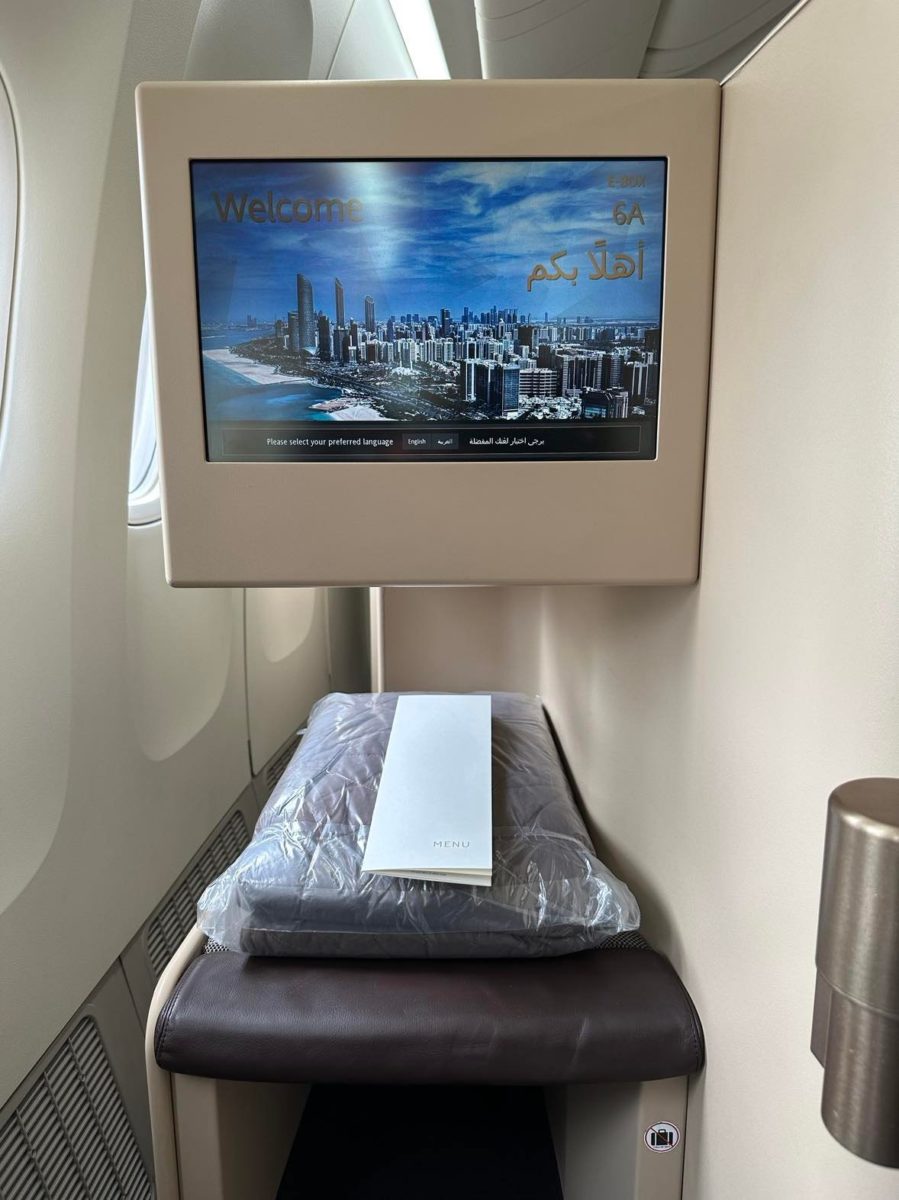
Even though there is now a direct flight from Australia to Rome, some still would prefer a stopover. Abu Dhabi (along with Dubai) isn’t up there as a week-long destination, but as a one or two-day stopover, it does just fine.
Flying with Etihad from Sydney to Abu Dhabi first is then a good way to spend some time in a city, break up the transit, and then head onwards to all the fascinating cobblestoned nooks and crannies that make Rome such a wondrous city.
The transit is clearly made easier by Etihad’s tight, efficient Business Class offering. The 777 may be vastly outdated, especially when you know what you’re missing, but it only serves to show how good it’ll be when Etihad brings the updated Business Studio down to service the 14.5-hour route.
Until then, I’d keep an eye out for any announcements and book accordingly. 14.5 hours can be taxing but would be much easier with a more spacious, slicker Business Class product compared to what we have on board the 777, which I suspect was introduced post-pandemic to increase Economy capacity while sacrificing the Business product.
The bottom line: Wait until Etihad phases out the 777 if you want the full Business Class experience. And when that does happen, Etihad’s Business Class offering is up there with the best of them.
The writer flew as a guest of Etihad Airways.
